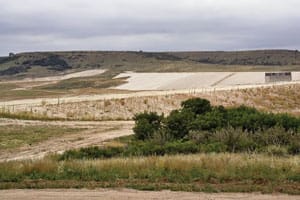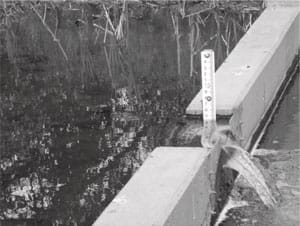Renewable water solutions

This information has been provided by and space paid for by the Castle Pines North Metro District.
Renewable water solutions how far we have come and where we have to go
As public awareness has increased about declining aquifer levels, residents have adopted water saving methods to reduce the demand for water. While these efforts have reduced overall water demand in CPN, water conservation alone cannot be viewed as the only solution to the community’s water needs. The sheer volume of demand by surrounding communities also impacts Castle Pines North’s primary water resource–the Denver Aquifer Basins.
Finding renewable water resources is vital in order to meet the Castle Pines North Metropolitan District’s existing demand for water by growing populations. It is not practical to drill additional wells into a basin that cannot be replenished. The number and location of wells is strictly regulated and impacts neighboring communities. Castle Pines North lacks the needed space for more wells.
Arapahoe Basin water levels are dropping at a rate of 25 feet per year and well production rates are declining as a result of that reduction. In the future, bedrock groundwater wells will provide interim and back up supplies of water, but cannot be relied upon as long-term supply.
Renewable Water Sources are Key
In 2006, a study of the District’s historical water use and projected demands was conducted by Camp Dresser McKee. Their conclusion was pivotal in directing the Metropolitan District’s course of action that would be necessary to ensure the ability to fulfill the community’s future water demands.
CPNMD quickly adopted a proactive approach to the dilemma and focused on the key areas needed to fulfill future water use needs and identifying how to acquire the necessary components for:
Water storage
Surface water supplies
Water treatment and transmission
Great Strides in Obtaining Resources – What’s in Place
Water Storage
Water stored in reservoirs allows for immediate access to renewable water. Such storage would make it possible to shut down well operations during the months with off-peak usage (October through April), thus saving a significant amount on expenditures for electricity to operate the pumps. Allowing the pumps to “rest” also results in additional savings on maintenance and repair costs.
Reuter Hess Reservoir
In 2008, CPNMD purchased 1,500 acre-feet of storage space, plus sufficient outlet capacity to meet maximum day demands. The reservoir (pictured below) was initially constructed to serve customers of the Parker Water and Sanitation District. Storage capacity was increased to accommodate other water providers in Douglas County. Located in Parker, partners in the project include CPNMD, Castle Rock and Stonegate. Construction is scheduled for completion in 2011.
Surface Water
Castle Pines North Metropolitan District has acquired renewable supplies of surface water through the purchase of several water rights. Surface water sources are naturally replenished each year by rainfall and snowmelt. These supplies will yield a total of 1,050 acre-feet of water to CPNMD which represents approximately 60 percent of the District’s overall annual water demand.
Anders Brothers Farm
CPNMD acquired approximately 253 acre-feet of senior water rights in April 2009 along with approximately 280 acres of land that will be used by the District to maintain the historic use of these agricultural shares until they have been converted from agricultural use to municipal use. This conversion process is estimated to take approximately five years as the water rights proceed through water court. The water rights acquired by the District include 80 shares of the Fulton Irrigation Company that generates an average annual yield of 128 acre-feet and one-half share of the Platteville Irrigation and Mining Company that generates an annual average yield of 125 acre-feet.
Fulton Irrigation Company
One of the most senior rights on the Lower South Platte River is the Fulton Irrigation Company that diverts water from the South Platte River near Brighton, Colorado. In October 2009 the District purchased an additional 25 shares of the Fulton Irrigation Company. These shares are projected to generate an annual average yield 35 acre-feet of water.
Hock Hocking Mine Water Rights
This water right generates an average annual yield of 330 acre-feet of water. This water is diverted near Fairplay, Colorado, and flows down the Upper South Platte River into Chatfield Reservoir.
Future Projects
WISE Partnership – Water Infrastructure & Supply Efficiency
Combining efforts and establishing intergovernmental agreements allows for the integration and most efficient use of available water resources, and provides a backup for peak demand and drought periods. These partnerships also make the acquisition of renewable water resources attainable by sharing in the enormous overall costs.
CPNMD has entered into one such agreement with Denver, Aurora and South Metro Water Supply Authority.
Additional Water Storage
Chatfield Reservoir Reallocation
This project will reallocate reservoir storage space from flood control use to multi-purpose use to address the water supply needs within the South Platte River basin. It offers CPNMD the potential for 881 acre-feet of water storage. The project is going through an Environmental Impact Study (EIS). That study will be available for public review in early 2010.
Additional Surface Water
Fulton Irrigation Company
The District is currently performing due diligence on approximately 60 additional shares of the Fulton Irrigation Company and hopes to close those purchases by the end of 2009. The anticipated yield will add an additional 96 acre-feet of renewable water.
Plum Creek Water Rights
These 2004 water rights are currently being adjudicated in water court and are anticipated to be decreed in late 2010. As “junior” water rights, water may only be diverted during years of high amounts of rainfall and snowmelt. It is planned to store this water source in Rueter Hess Reservoir and Chatfield, thereby optimizing the benefit.
Water Treatment and Transmission
Centennial to Castle Pines North Interconnect Project
This distribution system is designed to divert water from Plum Creek through a 24-inch pipeline from Centennial to be used directly by the District and also be delivered to Rueter Hess Reservoir for storage. The system will have three connection points in Castle Pines North:
Near Lift Station 3 on Monarch Boulevard
Far north end of the District near Serena Drive
Hidden Point
East Cherry Creek Valley Pipeline (ECCV)
This is a major pipeline project to transport water from Barr Lake to the ECCV holding tank located at E-470 and Smoky Hill Road. South Metro Water Supply Authority (SMWSA) is in the process of purchasing a portion of the pipeline’s capacity to convey water. As a member of the SMWSA, Castle Pines North Metropolitan District will have the option to share in this project. Future plans include a treatment plant and water rights.
Gravel Pit Storage
CPNMD is working in conjunction with the South Metro Water Supply Authority and is in the process of performing diligence on two gravel pit reservoirs located on the Lower South Platte River near Brighton. These gravel pits will be reclaimed in such a manner as to allow for the storage of up to 2,500 acre-feet. These storage facilities can be used to capture water in the high flow months, which occur in the late spring and early summer.
For additional information about projects the Metro District is working on, go to www.cpnmd.org.